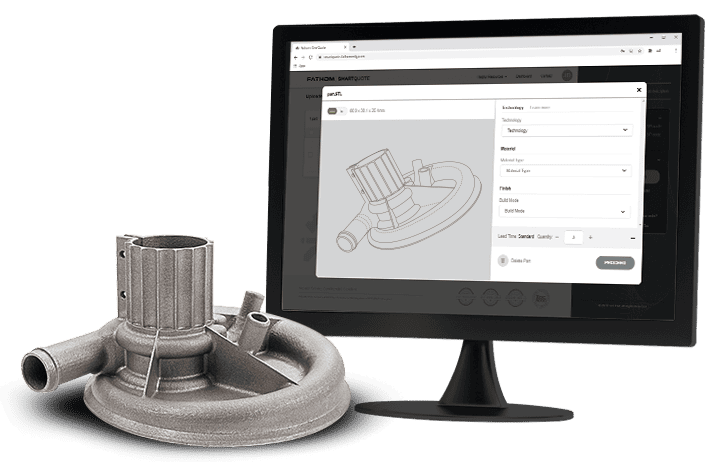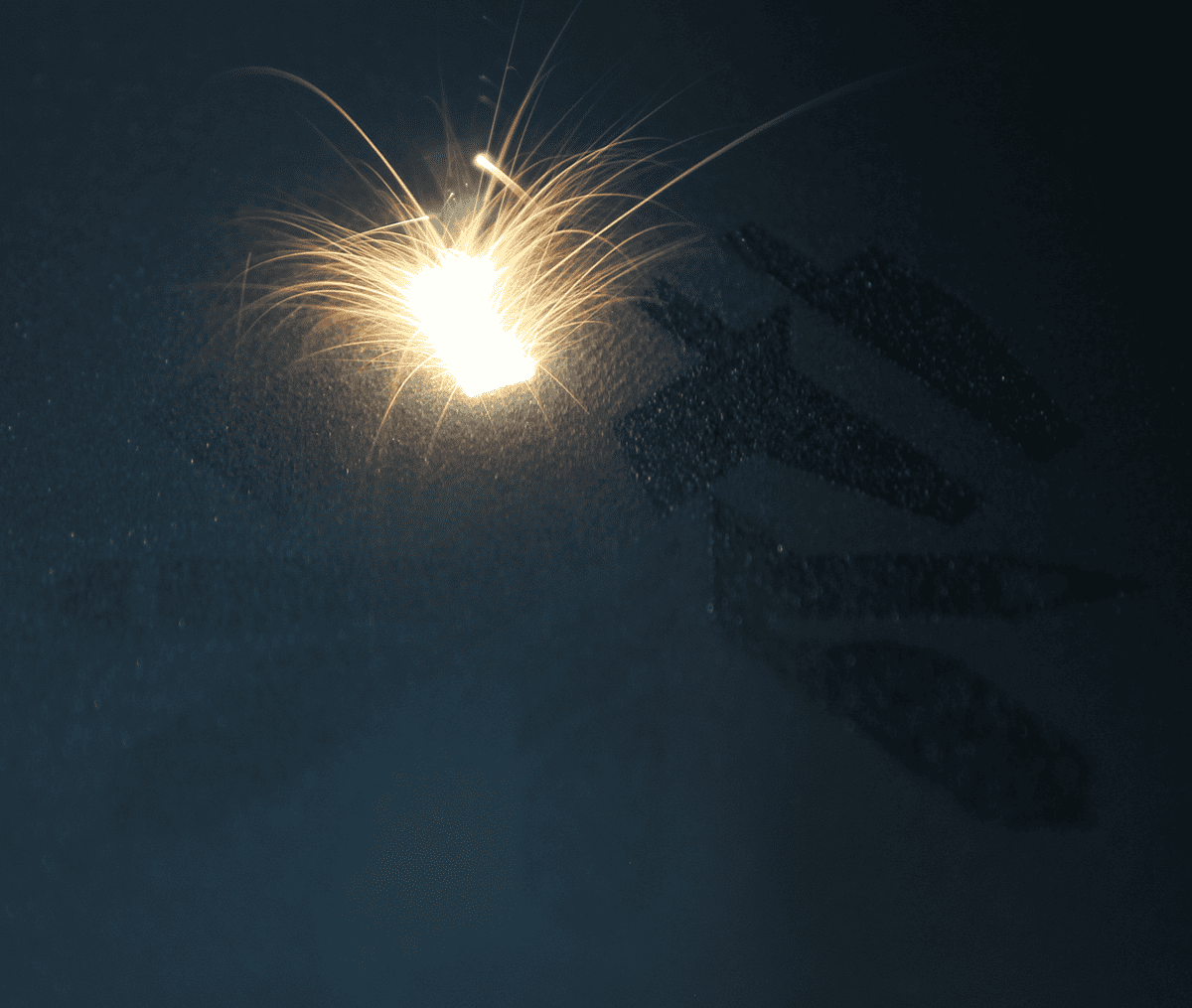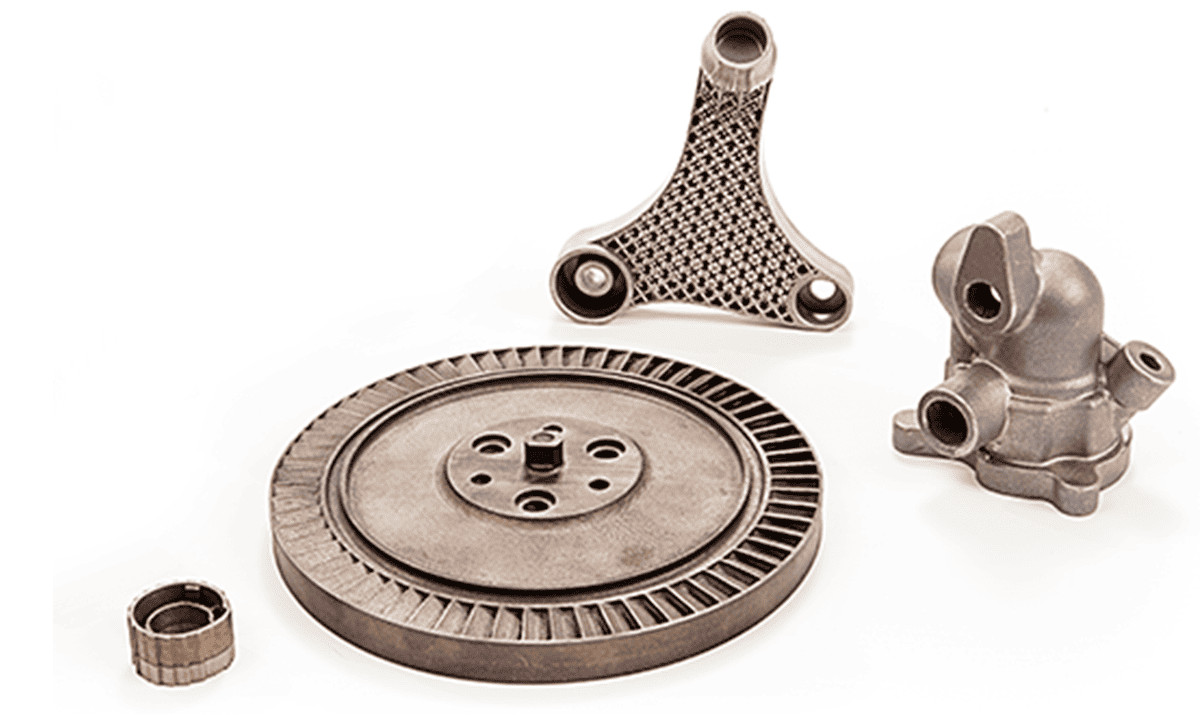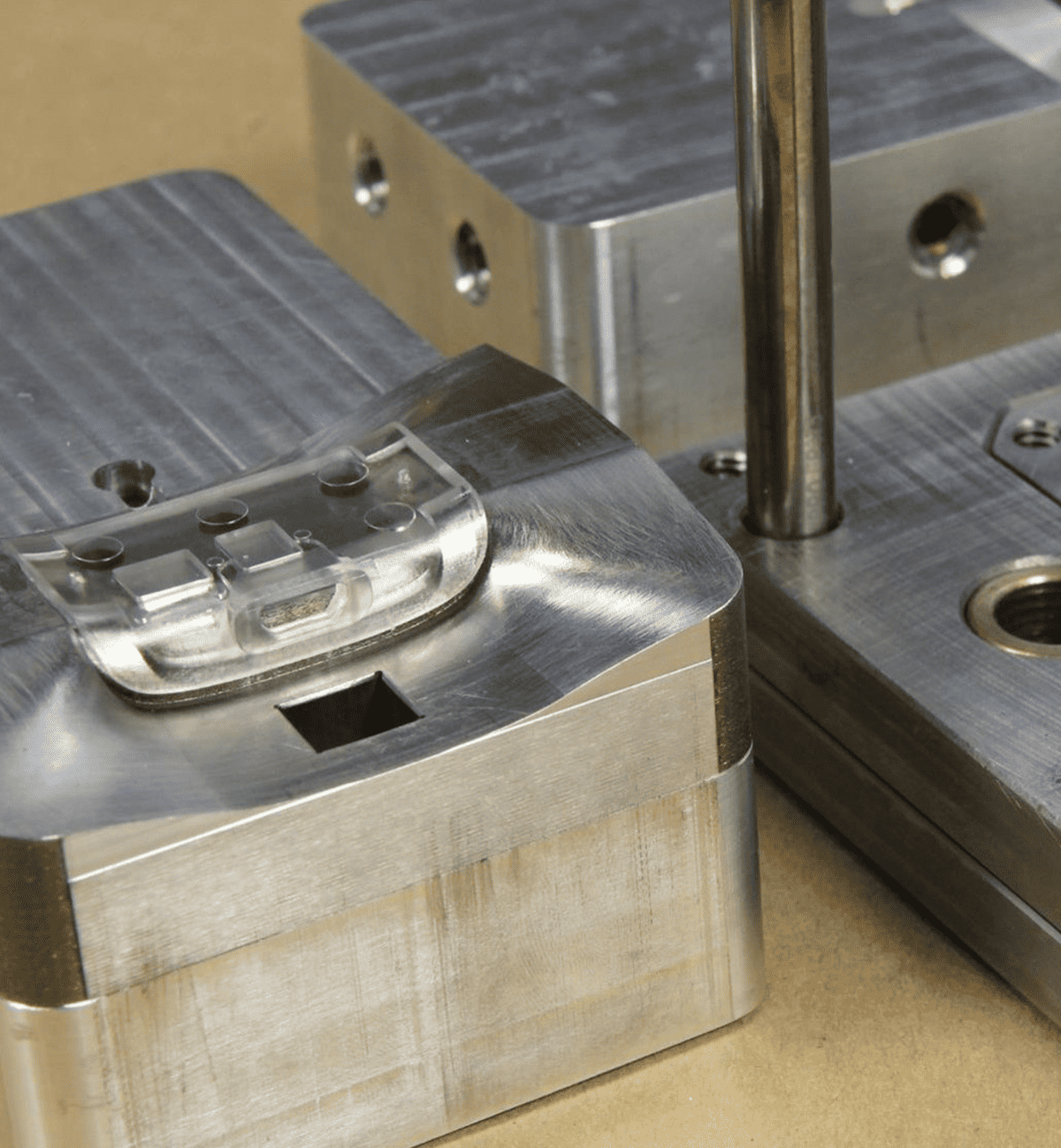Direct Metal Laser Sintering //
DMLS 3D Printing
- Get High-Quality Metal Parts Fast – Without Tooling
- Perfect for Prototype, Bridge and Low-Volume Production Parts
- Complex Geometries with High-Performance Metals
Get a Quote
And connect to Fathom experts

Get Complex Metal Parts Fast
with Direct Metal Laser Sintering (DMLS)
Ideal for Prototype Parts and Bridge Production
Are you developing a new product? Are you under pressure to bring it to market quickly? Do you need to validate the fit and finish of a metal part, but aren’t ready to have expensive tooling and fixtures made?
Direct Metal Laser Sintering (DMLS), also known as direct metal printing, is a metal additive manufacturing technology that can help you solve this problem and accelerate your time to market. It’s perfect for:
- Prototype parts
- Bridge production while you’re awaiting your production tooling
- Low- to medium-volume production parts
- Complex metal part designs that can’t be produced any other way
- Situations where you need metal parts – fast!
Fathom operates one of the largest and most experienced DMLS services in North America.
DMLS Parts in as Soon as 3 Days // Get A Quote
How Does DMLS Work?
A metal 3D printer utilizes a laser beam to melt 20- to 60-micron layers of metal powder on top of each other. Powdered metal is spread across the entire build platform and selectively melted to previous layers. This additive process allows metal parts to be grown out of a bed of powdered metal.
The result is a high-quality metal part that doesn’t require sintering and has the mechanical characteristics of cast metal parts. Fewer steps equal faster production – usually 5 days or less.
Because no tooling is required for direct metal printing, parts can be produced at a fraction of the cost of custom steel tooling and fixtures.

Applications of DMLS
Functional Prototypes // Produce and iterate prototype part designs quickly – without the expense of tooling.
Jigs and Fixtures // The exceptional toughness of DMLS parts makes them ideal for jigs and fixtures for CNC machining, part inspections and more.
Flow Applications // Certain part designs require channels for fluid or air to pass through. This includes conformal cooling channels, which run just below the surface of the part. They can’t be machined into parts but are easy to create using 3D printing with direct metal printing.
Fast Metal Tooling for Injection Molding // DMLS can be used to build short production-run tooling for injection molding.
Industries where direct metal printed parts are used include:
- Aerospace
- Medical
- Dental
- Automotive

What Does DMLS Printing Service Make Possible?
Design Freedom // Subtractive manufacturing techniques place limits on what you can create. direct metal printing enables you to produce part designs that are difficult or impossible to achieve with traditional manufacturing techniques, such as:
- Internal supports
- Weight-saving lattice wall sections
- Conformal cooling channels
- Undercuts
- Draft angles
- Internal cavities
- Varying wall thicknesses
Part Consolidation // Thanks to the design freedom that DMLS enables, you can consolidate assemblies into a single, printable part that is lighter, less expensive and more reliable.
Fast Prototyping // DMLS empowers you to iterate your prototype part designs quickly – without the need for costly tooling. You can also use it to print multiple variations of a part at the same time to determine which one offers the best functional design.
Production Parts // Need bridge production? You can use Fathom’s DMLS services to produce several hundred production-quality parts quickly so you can keep your production line running while you wait for tooling.
Advantages
Complex Geometries // DMLS can print complex part designs that aren’t possible to fabricate using traditional methods. Engineers are also free to design complex parts without the need for support structures.
Excellent Mechanical Properties // The sintering process used with direct metal printing produces parts that are strong and durable. They exhibit high tensile strength, hardness and wear resistance, making them suitable for demanding applications in the automotive, aerospace and medical industries.
Mass Customization // No fixtures or tooling are required to produce DMLS parts. That makes it easy for engineers to modify or fine-tune part designs during production. It also enables designers to create multiple variations of parts as needed.
Metal Characteristics are Preserved // The sintering process used to transform metal powder into parts bonds them without melting the metal. That means its mechanical properties remain intact after the part is produced.
Disadvantages
Small Build Volume // As a platform for additive manufacturing, the build volume of DMLS is on the smaller side. It’s best for producing small parts.
Post Processing // Depending upon the part and its application, DMLS parts may be post-processed using heat treatment, surface finishing and machining.
Expertise // As a technology, direct metal printing is a complex additive manufacturing process that requires expertise to consistently produce high-quality parts, and a detailed DFM/DFAM analysis is critical to success. However, Fathom is one of the largest and most experienced sources in North America for DMLS services and can be trusted with your critical production!
What Can DMLS be Paired With?
DMLS parts are dense and have similar mechanical properties to cast parts. Where tight tolerances are required, DMLS parts can be 3D printed at a near-net shape and then machined to meet them.
Once a part has been produced using direct metal printing, it can be improved using processes that are common to finishing metal parts, including media blasting, metal plating, micromachining and polishing. Holes or threads may be added to parts using CNC machining.
Titanium is notoriously hard to machine. For aerospace applications, where light weight and strength are a must, DMLS can be used to produce strong, lightweight parts using this exotic material.
Alternatives to Direct Metal Printing
Metal injection molding
Selective laser melting
Laser deposition welding
Traditional Technologies That Can Benefit from DMLS
Direct Metal Laser Sintering can be used to build complex part designs that aren’t possible using traditional manufacturing methods such as CNC machining and metal casting.
DMLS also enables fast, low-cost production of prototype and production parts – without tooling.
In addition, direct metal printing enables designers to combine multiple machined or cast parts into a single component that is stronger and lighter than the assembly it replaced.
Finally, DMLS can replace casting or machining of low-volume replacement parts, which usually require costly set-up time, fixtures and labor. Instead, you can use Fathom’s DMLS services to print them on-demand as needed, reducing or eliminating the need to maintain an inventory of service parts.

DMLS Materials Available
Common materials used to produce DMLS parts include:
- Aluminum
- Maraging steel
- Stainless steel
- Titanium
Not sure what you need? Talk to a Fathom expert today!

Finishing Options for DMLS Parts
Fathom’s commercial 3D printing service offers a multitude of in-house finishing options for DMLS parts. Our experts can also manage any of your outsourced finishing needs.
Fathom offers these post-processing DMLS services:
- Sanded
- Tumbled
- Media blasted
- Polished (with clearcoat)
- Electrochemically polished
- Painted (EMI shield)
- Painted (sand and paint, non-cosmetic)
- Painted (sand and paint, cosmetic)
- Painted (customer spec paint)
- Specialty coating
- Plated
- Decals
- Pad printed
- Screen printed
- Inserts
- Post-machined
- Assembly
- Abrasive flow machining
- Heat treated
- Passivated
- HIP
Our craftspeople are ready to meet your post-processing needs. Talk to an expert now.
Parts built on a DMLS machine have a raw, rough finish comparable to a fine investment cast. The surface roughness is approximately 350 R a- µ inch or R a-µm 8.75, or a medium-turned surface. This surface roughness can be improved all the way up to 1 R a- µ inch or R a-µm 0.025, qualifying as a super mirror finish.
Multiple processes can be used to achieve the desired surface roughness or finish, including:
- Abrasive blast (grit and ceramic)
- Shot peen
- Optical polish
- Electrochemical polishing
- Abrasive flow machining (extrude hone)
- Electroplating
- Micro machine process (MMP)
- CNC finishing/machining
Why Choose Direct Metal Printing?
Prototype to Production
Produce high-quality prototype, bridge or production parts with excellent mechanical properties – without the expense of tooling, jigs and fixtures.
Complex Designs
Build complex part designs that cannot be manufactured with conventional metalworking technologies.
Problem Solving
Achieve your goals for part consolidation and weight reduction that can’t be met any other way.
Why Choose Fathom’s DMLS 3D Printing?
Fathom has the expertise and technology to help you meet your needs faster.
Fathom has numerous DMLS printers, making it one of the largest service bureaus for DMLS services – with deep DFAM and production expertise to match.
We also offer a wealth of post-processing capabilities under one roof – which can save you time and money.
Get a quote on your DMLS project today with our SmartQuote platform.
Additional Resources
